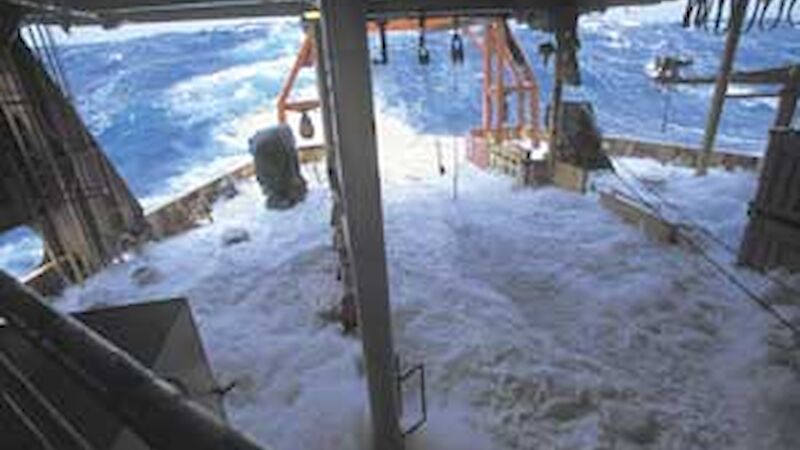Scheduling a shipping program for working in the Southern Ocean is a vexed business. Long term plans become obsolete the first time the vessel encounters the conditions that have given it the reputation as the stormiest sea in the world. Whether it be lowering instruments to the sea bed or towing them behind, or retrieving them from submerged buoys where they were deployed a year ago, it is almost certain that the outcome and timings will not match the original plan.
Towering seas, snow and wild winds ensure that Mother Nature rules in the Southern Ocean. Ships’ Masters spend many hours observing, recording and plotting, using their experience to distill the array of information from satellite weather charts and photographs in a quest to make opportunities for the conduct of research when the sea and wind and swell permit safe operations.
It requires dedication and determination, often with repeated attempts, to achieve a component of the program. One task at a time, a variety of approaches perhaps, until, after weeks of working on the most unstable platform, the work is achieved and the ship returns to smooth waters to re-stock and re-fuel before heading south into the maelstrom once more.
The following account by the Master of the Aurora Australis, Captain Les Morrow, of one storm on one marine science voyage (Voyage 7, January–February 2002) gives some insight into the challenges of conducting scientific research in the Southern Ocean.
We have had some severe weather as an intense low passed close south of us on the 31st January.
Using satellite data, we had seen the likely path of that system for a few days previously, and I had contemplated trying to avoid the worst of it. But the speed at which it appeared to be moving convinced me that to get out of the way, I really needed to be driving an Incat fast ferry.
Conditions freshened up from about 11 am on the 30th, as the wind veered from west to north and increased to 45 knots by 11 pm.
One hour later, the wind was 50 knots with 10 metre swell waves, and it was then that we decided to heave-to.
The wave period was very short, and this made the ship motion very uneasy and caused water to be shipped over the bow, quite an unusual thing for us as our broad beam well forward means that she normally throws the water away in heavy seas.
Down aft, the pitching motion of the ship meant that the trawl deck was frequently awash to considerable depths. One wave that came up the stern ramp, came over the mezzanine deck as well. I know because that was where I was standing with the boatswain checking things, and we were buried !
Those conditions worsened a little through to about 11 am on the 31st, by which time the wave height was around 11 to 12 metres. From then until 2 pm, the winds increased at times to 60 knots, and I estimated wave heights to be averaging 12 metres with quite a number being nearer 14 metres!
Fortunately this period remained very short. Around 1 pm, a number of waves reached 16 metres. But after 2 pm, there was a very gradual easing so that by later that day (31 January), the wind was 35 knots from the west and wave heights had dropped down below 8 metres.
We are all in agreement here that it was a first class storm !
Les Morrow,
Master,

